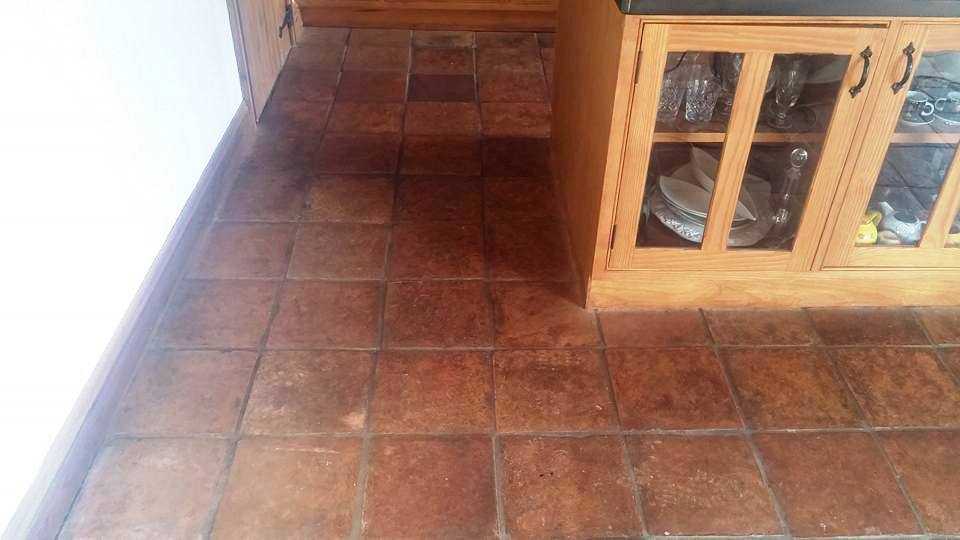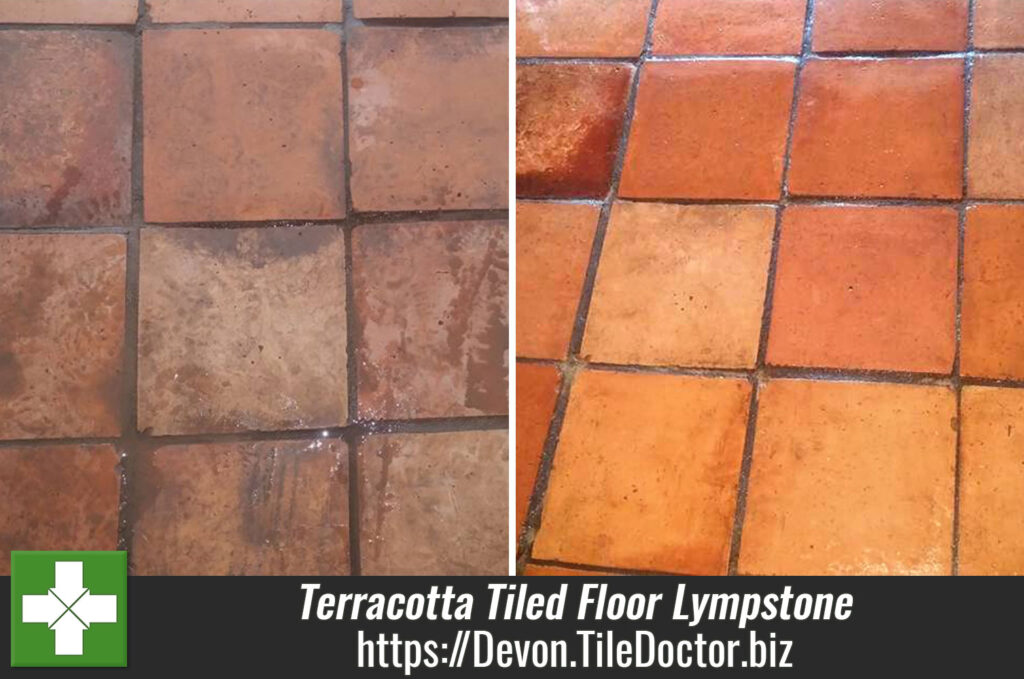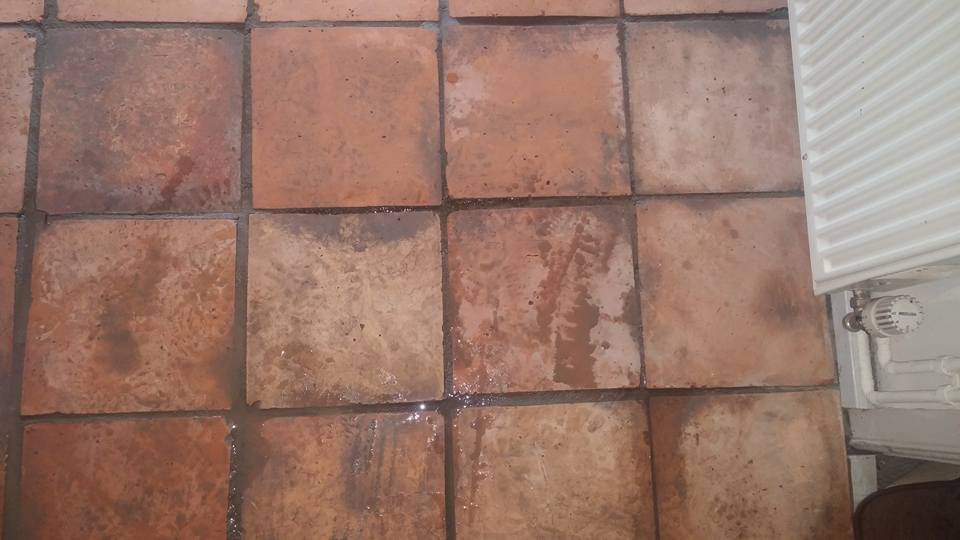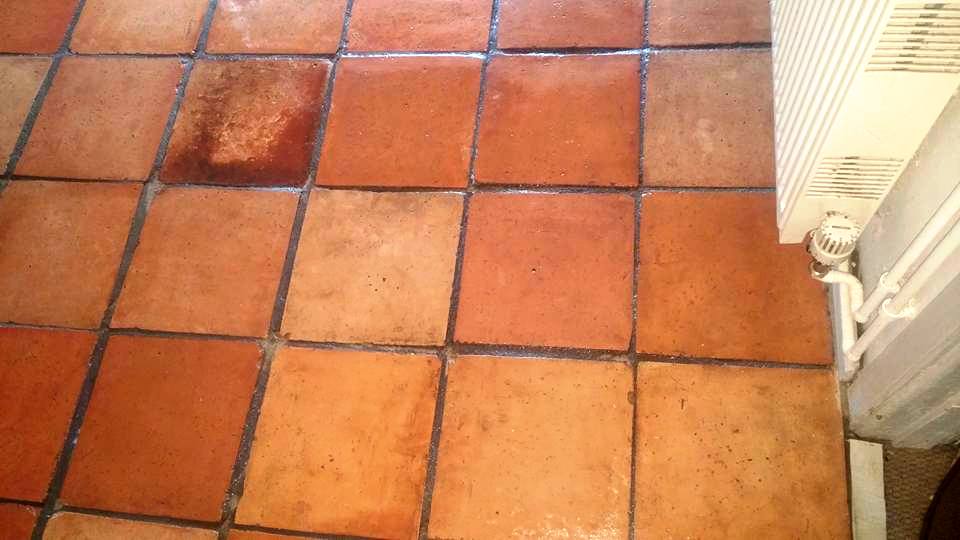Improving the Shine on a Terracotta Tiled Kitchen Floor in Whimple
I was contacted by a homeowner from the small village of Whimple, (Nine miles East of Exeter), about the sealer on their Terracotta kitchen tiles. The floor had only recently been cleaned and sealed by another company but the sealer left the floor looking dull and matte and she wanted a high sheen finish.

Dissatisfied with the results I was asked to strip back the Terracotta tiles again and reapply a suitable seal which would finish the tiles in a high sheen. Tile Doctor have a range of sealers for all types of floors and finish and from the brief I knew that Tile Doctor Seal and Go would be idea for this floor, it leaves a lovely sheen finish and being a water-based product, it doesn’t leave a smell as it dries.
Cleaning a Terracotta Tiled Kitchen Floor
Work started by removing the kickboards and protecting up around any skirting to protect from water ingress. Once done a strong dilution of Tile Doctor Remove & Go was sprayed onto the Terracotta tiles and left to soak in for a good 15 minutes to give it time to emulsify and break down the seal which their previous contractor had applied.
The floor was then scrubbed using a rotary machine fitted with a stiff nylon scrubbing head. This action removed the sealer into the cleaning solution and where I was able to extract from the floor using a wet vacuum. Once removed I ran a water test over the tiles to check the sealer was gone and repeated the exercise where required until I was satisfied all the sealer was gone. This is important as the new sealer may not be compatible with the original which could result in discolouration and potentially peeling off the tile later.
Remove and Go is an alkaline product so to neutralise the ph level of the floor after stripping and to further clean the tiled I gave the floor an acid wash using diluted Grout Clean-up. After a quick scrub the excess product was removed and the floor given several rinses with water, this was followed with the wet vacuum to remove as much moisture from the tiles as possible and thereby reduce the drying time.
Sealing a Terracotta Tiled Kitchen Floor
The floor was left to dry out overnight and after checking moisture levels the following day I was pleased to see it had dried and was now ready to accept a fresh sealer. Before applying Seal & Go however I decided to apply a base coat of an impregnating sealer called Colour Grow which as its name suggests will enhance the natural colour in the Terracotta.
After an hour, the Colour Grow had dried and I began building up coats of acrylic seal ‘Seal & Go’. Terracotta is quite a porous material and the floor took six coats of Seal & Go before I had achieved the right level of sheen desired by the customer.
On the customers return home they were thrilled to see the new finish was exactly what they wanted and have now set up an annual maintenance plan with me to keep the sealer topped up and floor looking the way they like it.

For day-to-day cleaning I recommended Tile Doctor Neutral Tile Cleaner which is a pH neutral tile cleaning product and recommended for sealed Terracotta. It’s a mild cleaning product that won’t strip the tiles of the newly applied sealer like many strong household cleaners can. It comes in a concentrate form so a small amount goes along way.
Professional Restoration of a Terracotta Tiled Kitchen Floor in Devon
Improving the Shine on a Terracotta Tiled Kitchen Floor in Whimple Read More »








